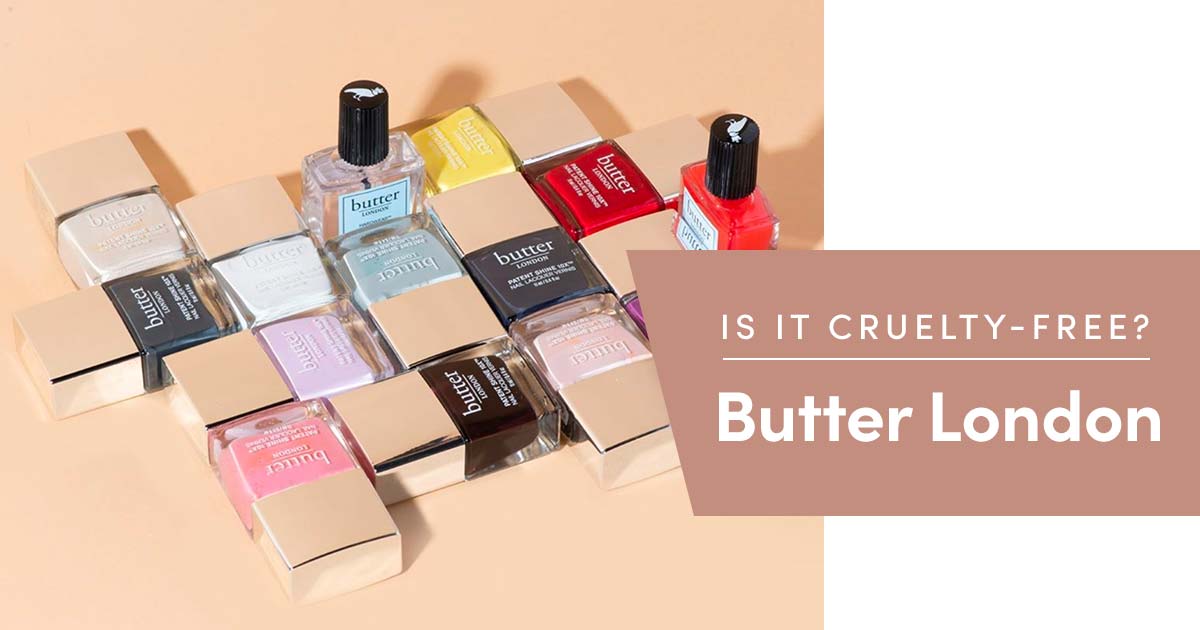In an era defined by increased awareness of animal rights and ethical consumerism, the beauty industry is increasingly under scrutiny. Butter London, a brand founded in 2005, positions itself as a champion of cruelty-free cosmetics. However, loyal customers and conscientious shoppers alike must delve deeper to discern whether this claim holds substantive merit or merely serves as clever marketing. This exploration will navigate the complexities surrounding Butter London’s cruelty-free assertions, elucidate the industry landscape, and present consumers with the information necessary to make informed choices.
Initially, it’s crucial to define what “cruelty-free” means within the cosmetics industry. Cruelty-free signifies that a product and its ingredients have not been tested on animals at any point throughout the development process. For consumers, finding products that meet this ethical criterion is pivotal in aligning purchases with personal values. However, the term itself is not universally regulated, leaving some brands to exploit this ambiguity for marketing gain. Unfortunately, this lack of standardization means that merely labeling a product as cruelty-free may not always signify a genuine commitment to animal welfare.
Butter London’s self-proclaimed status as a cruelty-free brand has garnered a loyal customer base. With their tagline “Beauty with a Conscience”, the brand touts an impressive array of products, spanning nail polishes to skincare, all claiming to be devoid of animal testing. This resonates with consumers keen on ethical consumption. However, the question arises: is this claim substantive, or is it merely an adroit marketing strategy designed to manipulate emotionally-driven purchasing habits?
The company emphasizes transparency regarding its cruelty-free commitment, which is a positive attribute in an industry often marred by obfuscation. Butter London’s policies state that they do not test on animals, nor do they commission third-party testing. Furthermore, the brand ensures that its suppliers also adhere to ethical guidelines. This creates a seemingly comprehensive stance against animal testing; yet, it prompts further inquiry into the conditions under which their products are produced.
Upon closer examination, it’s pertinent to evaluate Butter London’s global distribution strategy, particularly in regions where animal testing is mandated by law. China, for instance, has historically required animal testing for cosmetics sold within its borders. Although Butter London officially claims that it does not sell to markets that require animal testing, the occasional ambiguity in this area raises eyebrows. The brand has expanded its reach into various countries, and while it continues to assert that it avoids the Chinese market, the fluidity of laws and regulations requires continuous vigilance from consumers.
Additionally, the regulatory landscape surrounding cruelty-free certifications often involves a multitude of organizations. Many brands strive for certification through groups like Leaping Bunny or PETA, which establishes a more robust credibility for cruelty-free claims. Butter London has not prominently displayed such affiliations, which begs the question of whether its standards are merely self-imposed or recognized by trusted external bodies. Without such certification, consumers are left to navigate the murky waters of credibility on their own.
Moreover, the presence of parent companies complicates the narrative significantly. Butter London was acquired by a larger conglomerate, which often introduces a myriad of practices that may not reflect the original company’s values or claims. The ethical obligations of the parent company can cast shadows over the sincerity of Butter London’s cruelty-free marketing. Are they required to comply with less-than-ethical practices in order to maintain shareholder value or expand market reach? These concerns highlight the precarious position beauty brands inhabit within the corporate ecosystem, where profit often trumps ethical integrity.
As consumers become more educated, they are more likely to scrutinize ingredient lists and supply chains thoroughly. This emerging trend has spurred brands, including Butter London, to increase their transparency. Ingredients like animal-derived collagen or certain colorants sourced from insects may negate the cruelty-free claim if consumers are not vigilant. Thus, the conscious consumer must navigate these intricacies while engaging with Butter London’s products to ensure alignment with their ethical standards.
In addition to ethical considerations, the environmental impact of production methods cannot be overlooked. Many cruelty-free brands strive to implement sustainable practices, such as eco-friendly packaging and sourcing from renewable materials. Butter London markets itself as a progressive brand in this context, yet skepticism remains regarding the comprehensive nature of its commitment to sustainability across all product lines. For consumers who prioritize environmental stewardship alongside animal welfare, this aspect is paramount in the decision-making process.
Ultimately, the crux of the matter rests in consumer empowerment. Knowledge is an invaluable asset when navigating the labyrinth of beauty products and their ethical claims. Information is paramount, and consumers are encouraged to engage with the brands they support actively. By reaching out to Butter London for clarity or conducting independent research, shoppers take control of their purchasing decisions, ensuring their choices reflect their values.
Butter London undoubtedly presents a compelling case for being cruelty-free, but the veracity of this claim hinges on ongoing diligence on the part of both the brand and its consumers. In a world where labels can often deceive, maintaining a critical yet open-minded perspective is essential. While Butter London’s marketing may resonate with the conscious consumer, a deeper exploration into its practices is crucial to ascertain whether it stands true to its principles or merely skirts the edges of ethical marketing. In an industry fraught with complexities, the quest for genuine cruelty-free products remains a shared responsibility among consumers and brands alike.








